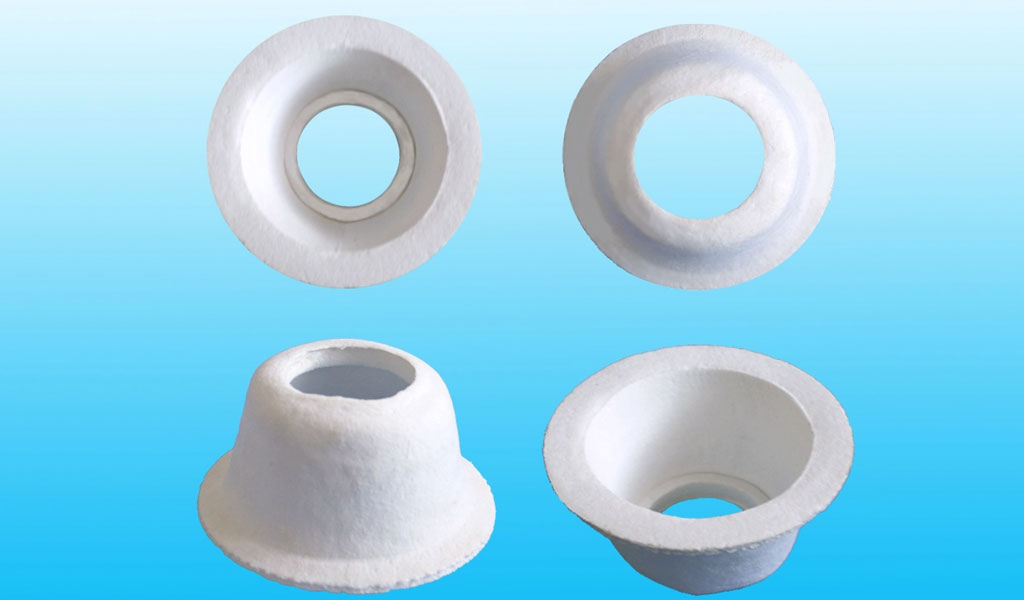Composite Ceramic

What Is Composite Ceramic
Composite materials usually have good comprehensive properties that different materials complement each other. Composite materials combine the characteristics of two or more materials and can improve the properties of a single material, such as increasing strength, increasing toughness and improving dielectric properties. As a ceramic composite material for high temperature structural materials, it is mainly used in aerospace, military and other departments. In addition, various ceramic composite materials are widely used in the fields of machinery, chemical industry, and electronic technology.
Ceramic matrix composite material is a kind of composite material which is composed of ceramic as matrix and various fibers. The ceramic substrate may be high temperature structural ceramics such as silicon nitride and silicon carbide. These advanced ceramics have excellent properties such as high temperature resistance, high strength and stiffness, relatively light weight, and corrosion resistance. However, their fatal weakness is brittleness. When they are in a state of stress, cracks will occur, or even fractures will lead to material failure. The use of high-strength, high-elasticity fibers and matrix composites is an effective method to improve the toughness and reliability of ceramics.
A multiphase material composed of ceramic and ceramic or ceramic matrix material and other materials.
There are mainly ceramic and metal composite materials, such as special inorganic fibers or whisker reinforced metal materials, cermets, composite powders, etc.; composite materials of ceramic and organic polymer materials, such as special inorganic fibers or whisker reinforced organic materials, etc.; ceramics Composite materials with ceramics, such as special inorganic fibers, whiskers, particles, plate crystals and other toughening and reinforcing ceramic materials. Ceramic matrix composites can generally be divided into particle-reinforced ceramic matrix composites and fiber-reinforced ceramic matrix composites.
The Properties Of Ceramic And Metal Composites
- Ceramics can penetrate well into fiber point whiskers and particle reinforcements;
- Form a strong binding force with the reinforcing material;
- There is no chemical reaction with the reinforcing fibers during manufacture and use;
- No damage to the physical properties of the fiber;
- Good creep resistance, impact resistance and fatigue resistance;
- High toughness;
- Chemical stability, with chemical properties such as corrosion resistance, oxidation resistance, moisture resistance, etc.
The Type Of Composite Ceramic Material
Ceramic matrix materials mainly exist in two forms of crystalline and amorphous compounds. According to the elements that make up the compounds, they can be divided into oxide ceramics, carbide ceramics, nitride ceramics, etc. In addition, some will exist in the form of mixed oxides
Oxide Ceramic Matrix
- Alumina ceramic matrix Ceramics with alumina as the main component are called alumina ceramics, and alumina has only one thermodynamically stable phase state. Alumina ceramics include high-purity alumina ceramics, 99 alumina ceramics, 95 alumina ceramics, 85 alumina ceramics, etc.
- Zirconia ceramic matrix Ceramics with zirconia as the main component are called zirconia ceramics. The density of zirconia is 5.6-5.9g/cm3, and the melting point is 2175℃. Stabilized zirconia ceramics have small specific heat capacity and thermal conductivity, good toughness and good chemical stability. It has acid and alkali resistance at high temperature.
Nitride ceramic matrixNitride ceramic matrixNitride ceramic matrixNitride ceramic matrix
(1) Silicon nitride ceramic substrate
Ceramics with silicon nitride as the main component are called silicon nitride ceramics, and silicon nitride ceramics have two forms. In addition, silicon nitride also has a low coefficient of thermal expansion, excellent resistance to cold and thermal fusion, resistance to various inorganic acids and alkali solutions except hydrofluoric acid, and resistance to molten lead, tin, nickel, yellow steel, aluminum and other nonferrous metals. Erosion of metals and alloys without sticking to these molten metals.
(2) Boron nitride ceramic substrate
Ceramics with boron nitride as the main component are called boron chloride ceramics. Boron nitride is a covalent bond compound, and the ceramics with silicon carbide as the main component are called silicon carbide ceramics. Silicon carbide is a very hard and abrasion-resistant material, and silicon carbide made by hot pressing is used as a tool for cutting diamonds. Silicon carbide also has excellent corrosion resistance, oxidation resistance
(3) Boron carbide ceramic matrix
Ceramics with boron carbide as the main component are called boron carbide ceramics. Boron carbide is a low density, high melting point, high hardness ceramic. Boron carbide powder can be formed into dense materials by pressureless sintering, hot pressing and other preparation techniques.